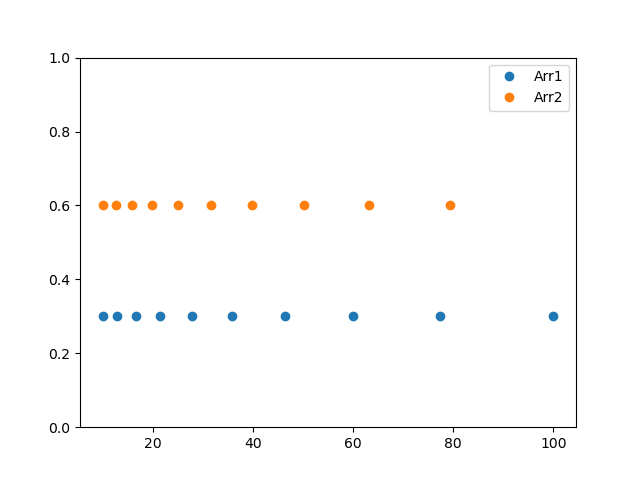NumPy - logspace() function
The NumPy logspace() function returns numbers spaced evenly on a log scale. The values are generated in the range [base ** start, base ** stop] with specified number of samples. The endpoint of the interval can optionally be excluded.
Syntax
numpy.logspace(start, stop, num=50, endpoint=True, base=10.0, dtype=None)
Parameters
start |
Required. Specify the starting value of the sequence. The starting value is base ** start. |
stop |
Required. Specify the end value of the sequence (end value is base ** end), unless endpoint is False. In that case, num + 1 values are spaced over the interval in log-space, of which all but the last (a sequence of length num) are returned. |
num |
Optional. Specify the number of samples to generate. Default is 50. Must be non-negative. |
endpoint |
Optional. Specify boolean value. If True, stop is the last sample. Otherwise, it is not included. Default is True. |
base |
Optional. Specify base of the log space. The step size between the elements in ln(samples) / ln(base) (or log_base(samples)) is uniform. Default is 10.0. |
dtype |
Optional. Specify type of the output array. If dtype is not given, infer the data type from the other input arguments. |
Return Value
Returns an array with elements within the specified range.
Example: creating array using logspace() function
In the example below, logspace() function is used with different parameters to create arrays.
import numpy as np
#creating 5 samples points in the given range
Arr1 = np.logspace(1,2,num=5)
print("Arr1 is:", Arr1)
#when endpoint=False, (num+1) samples are
#generated and returns samples without last
Arr2 = np.logspace(1,2,num=5,endpoint=False)
print("Arr2 is:", Arr2)
#using base=2.0
Arr3 = np.logspace(1,2,num=5,base=2.0)
print("Arr3 is:", Arr3)
The output of the above code will be:
Arr1 is: [10. 17.7827941 31.6227766 56.23413252 100. ] Arr2 is: [10. 15.84893192 25.11886432 39.81071706 63.09573445] Arr3 is: [2. 2.37841423 2.82842712 3.36358566 4. ]
Example: Visualize the sample
In the example below, arrays are created by taking endpoint parameter as True and False, and plotted using matplolib library to visualize the result.
import numpy as np
import matplotlib.pyplot as plt
#creating 10 samples points using endpoint=True
Arr1 = np.logspace(1,2,num=10,endpoint=True)
#creating 10 samples using endpoint=True
Arr2 = np.logspace(1,2,num=10,endpoint=False)
y = np.zeros(10)
#plotting Arr1 and Arr2
plt.plot(Arr1, y+0.3, 'o')
plt.plot(Arr2, y+0.6, 'o')
plt.ylim([0,1])
plt.legend(labels = ('Arr1', 'Arr2'))
plt.show()
The output of the above code will be:

❮ NumPy - Functions


